| 1 | Buff-striped keelback |
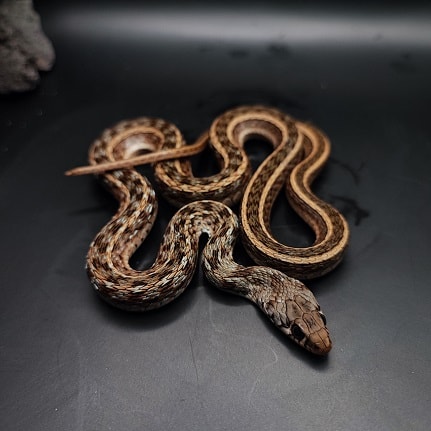
A 50-70cm species found all over India except the driest deserts and the towering Himalaya. They also inhabit Sri Lanka and Bangladesh, sticking close to water sources like lakes, streams and rice paddies. The buff-striped keelback has not only never killed a human, they’ve never even tried, unless there’s a rogue demented one out there that was raised by cobras.
Buff-striped keelbacks lack venom and almost never bite when picked up and manhandled. This species is everywhere in certain corners of India, particularly on roads, where they top the rankings for roadkill snakes. Buff-striped keelbacks mainly prey on frogs and toads, aiming for the head 70% of the time. Favourites include the Asian common toad, Indian bullfrog, and Tapai grass frog, and they also eat plenty of blind snakes. They hunt nearly exclusively by day, with just 3 nocturnal hunting escapades on record.
There’s virtually no way a buff-striped keelback could defeat a human. They could lure you into an Indian cobra’s lair, or in front of a pineapple lorry. They’re a pretty weak snake, yet they must be doing something right given how dominant they are in India.
| 2 | Sunbeam snake |
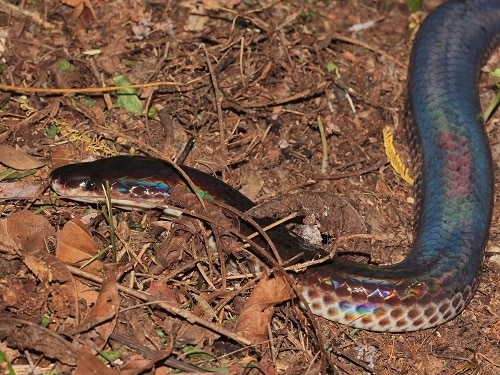
Sunbeam snakes are not only harmless, but add excitement to Thai people’s lives by being extremely fun to find. This is the most iridescent snake in southeast Asia, perhaps the world. They’re officially pure black with a pale belly, but full of shimmering rainbow colours when you shine a torch or even streetlamp on them.
Sunbeam snakes are abundant in traditional villages, by trails or on the edges of crop fields. They can be shy, lurking beneath rotting logs or leaf piles, but heavy rains bring them out in droves. One minute they can be nowhere, the next minute covering the entire woodland floor. You can pick a sunbeam snake up in your bare hands and suffer no reaction at all. You can inspect every red, blue and lilac shade and suffer no painful bite, although we recommend not touching them to avoid causing distress.
This species adds a touch of pizzazz to the Thai countryside, and are one species which definitely isn’t plotting ways to eat you. The shimmering rainbow colours are purely for show; they won’t infect your entire body and turn you into one of them. Nor can they fire them at you like a laser beam, depleting the colours for a few hours until they regenerate, like venom gets depleted. Sunbeam snakes primarily eat a mixture of reptiles and amphibians, including banded bullfrogs, flower blind snakes and striped kukri snakes. Their northernmost extent lies in southern China, and their southernmost in Java.
| 3 | Yellow anaconda |

Yellow anacondas rank among the top 20 longest snakes worldwide. They have sharp front fangs which could chomp a deep wound into your forearm, and are tricky to adjust to a life in captivity, staying feisty even for years. Yet in the wild, humanity coexists with them peacefully, in their Paraguayan, Argentine and southern Brazilian heartlands. Yellow anacondas are a large constrictor which lives in rivers and marshes, reaches 3.5 metres, and preys on a mixture of rodents and wading birds like storks.
If anything, humans are the aggressors, as Eunectes noteaus was hunted for its skins on a massive scale until the 1990s, which were converted to luxury handbags in Italy. This trade was placed under tight government control in 2002, and yellow anacondas seemed to have forgiven us rather than deciding to get collective revenge. They even inhabit towns sometimes, such as the metropolitan area of Asunción, coping well with pollution.
While huge and thick, yellow anacondas aren’t large enough to hunt a human, and they have a keen sense of when to engage prey. Their modus operandi is to leap from shallow river shores and drag startled prey in. They won’t initiate this manoeuvre unless they’re sure it will pay off. Likewise, they’re a fairly calm river cruiser which will only turn vicious if you stray into close quarters. The human and the yellow anaconda can definitely coexist. This species lives much further south than the more famous (and larger) green anaconda.
| 4 | Japanese ratsnake |
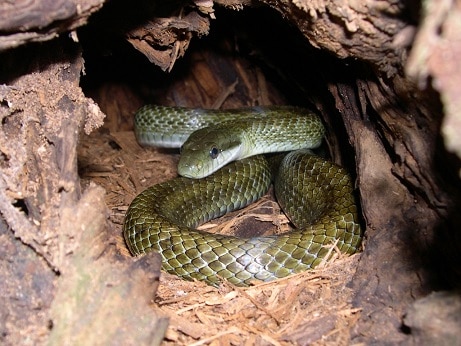
The Japanese ratsnake spends its life roaming through woods, fields and farmyards searching for small mammals. It also steals birds’ eggs from nests and cracks them open using one sharp belly contraction, piercing them with enlarged vertebral shelves. The Japanese people let them get on with this, as Elaphe climacophora is a completely non-threatening snake which could even take a shortcut through your bedroom window without incident. They’re non-venomous, non-nervous, and will only bite if seriously harassed.
Some Japanese people even worship this snake. In the mountains of Ikwada province, there’s an unusual pearly white population, which aren’t albinos, but a natural white morph. Supposedly, these are spiritual guardians of the local hills’ inhabitants, representatives of the Buddhist goddess Benzaiten. At the Shirohebi shrine, stone columns are carved with intricate snake sculptures, and even the taps visitors must purify their hands in. Inside lies a large breeding facility designed to replenish the rare white ratsnake’s population. The plan has succeeded, increasing numbers to 953 by 2005.
Among snakes over 1 metre, this is an unlikely one to be scared of. Their pupils are round, not vertical, they look calm, and they don’t have the sinewy writhing quality of those found in a circus snake pit.
| 5 | Common kingsnake |
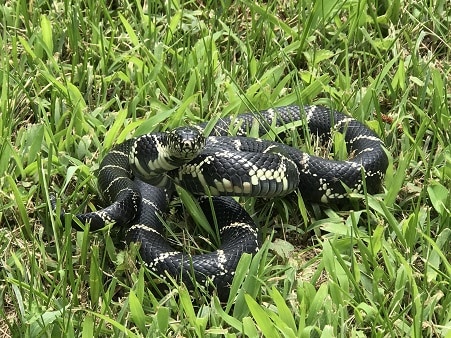
When US settlers first docked, they had no idea what kind of snake the common kingsnake (Lampropeltis getula) was. They could have seen its vivid black-white patterns and assumed that it was a weird western hemisphere viper offshoot, which spewed a deadly poison.
The opposite is true – common kingsnakes are a non-venomous constrictor which are abundant in the eastern USA, which have never killed a human being. In fact, Lampropeltis getula is a loyal and faithful ally of humanity, which does great work in the countryside without ever being requested. The reason? Common kingsnakes are strongly ophiophagous – they prey on fellow snakes, even those with venom glands containing corrosive toxins.
Without this species, there would be more timber rattlesnakes, more eastern diamondbacks, and more coral snakes. Common kingsnakes even look kind of cute up close, with round eyes, like they’re just loyal allies that want to assist you, unlike a snarling cottonmouth. Lampropeltius getula has varied habitats, including meadows, woodlands and farmyards, though rarely urban streets. If you see one slithering past, there’s absolutely no cause for alarm. Other prey in their diet include mammals like house mice and Hispid cotton rats.
| 6 | Ball python |
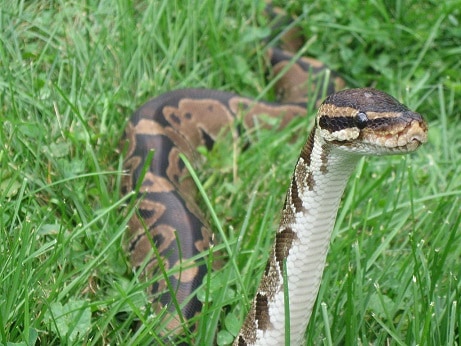
Ball pythons are regarded as the perfect friendly captive snake, and it’s no different in their native countries. Whether it’s a Nigerian farmyard, a Ghanaian crop field, or a Togan woodland, ball pythons cause absolutely no problems for their human neighbours, despite being so common, up to 10 times more abundant than the larger African rock python.
Ball pythons are non-venomous, and too small (1 metre) to actually hurt humans. Most importantly, they’re completely non-aggressive. This isn’t a given for the true python genus, as Malaysian blood pythons are notoriously snappy (though you might be too if you lived in a stifling 40C swamp). Local Nigerians are comfortable with ball pythons hanging around, and have even spun folklore tales, like the ball python being a relic of Oshimirri, the great sea in ancient times when all of Earth was water. Ball pythons also help their Nigerian masters (though they’d probably call them neighbours) by eating rodents in crop fields. They slither at a steady, non-alarming pace, and coil into a ball if they feel seriously threatened.
Ball pythons are easy to recognise, with a thick body and brown blotchy patterns. They have little colour variation, no random black or red morphs popping up. Ball pythons are also the most westerly python worldwide, reaching Gambia and Senegal on the Atlantic coast. There are no native pythons in the Americas, just boas.
| 7 | Western green snake |
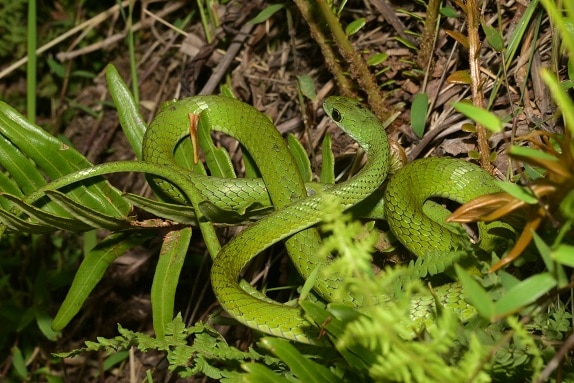
A humble water snake of southern Africa, found by lakes and streams. This is an African equivalent of a garter snake, much greener but equally harmless.
Western green snakes (Philothamnus angolensis) measure 100-120cm and have no venom, nor a particularly vicious bite. If they detect human presence, they’ll either flee or hide in disguising riverside plants. Which option they choose depends on the precise thickness of the vegetation. The one card they won’t play is a frenzied, vicious attack, because they’re smart enough to know they’ll lose, despite their poorly developed reptilian brains.
In fact, Philothamnus angolensis does humanity a favour, as the moment you see one peering at you from the shoreline, you’re more likely to turn around and avoid actual killers like crocodiles. This species is often mistaken for venomous green mambas, but has no way to kill a human. Wiser rivergoers will know they can walk past Philothamnus angolensis in complete peace, or calmly observe them in an idyllic African scene for hours while the sun sets, as long as they don’t scare them away, or attract curious crocodiles.
| 8 | Andean snail eater |
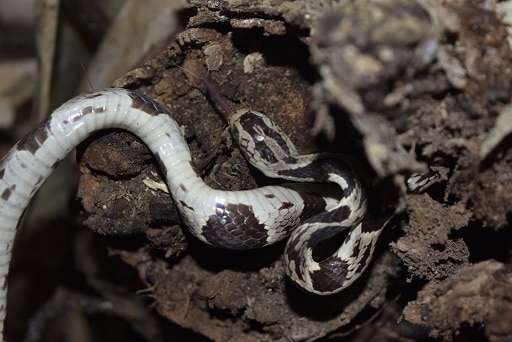
An Ecuadorian species recognisable by a U-shaped marking on the back of its head. This is a non-venomous snail-eater measuring 60-80cm (max 83.4cm), which switches between the ground and thin branches 0.5 to 3 metres high. 50% of its thoughts are occupied with snails, and 0% with humans.
Bumping into this snake in a forest, 20cm from your nose, will never end in a bite, even if it provides fuel for a nightmare or two. They don’t care about humans with their cars and guns; they care about the forest and their snails, occasionally about each other, and fellow jungle creatures which could end their life. There’s no reason for humans and Dipsas andiana to ever interact at all; they’re just a piece of the Ecuadorian scenery, hanging from branches like a scaly Christmas decoration.
Andean snail eaters inhabit much of western Ecuador, and a small portion of Peru. It’s a small range, but they’re common within that range. They belong to the 55 member Dipsas family, the most widespread member being Dipsas indica, which ranges throughout Brazil.
| 9 | Mexican garter snake |
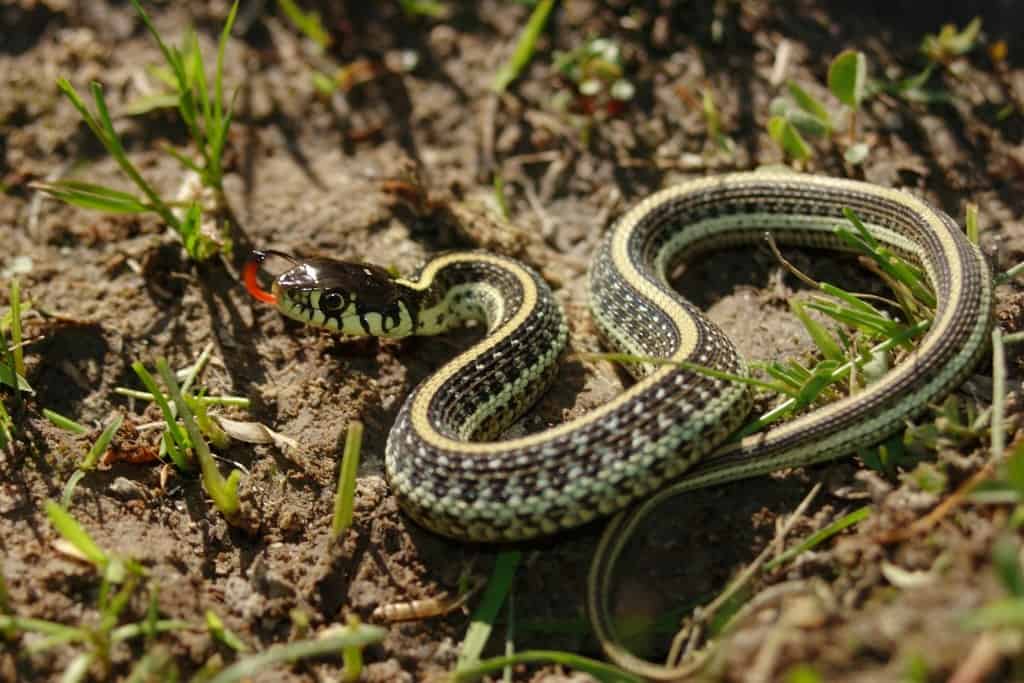
If you visit a lake in central Mexico and stick your legs in, there’s a good chance that the Mexican garter snake (Thamnphis eques) will come up to greet you. This is a 100-120cm serpent, which preys on Liobates waterfrogs and sometimes fellow snakes. They inhabit Mexico down to Mexico City, and cross the border into central Arizona.
Mexican garter snakes are extremely widespread in lakes and streams across Mexico, and they’re not a threat to humans in the slightest, whether a swimmer or fishermen. They can swim past your picnic mat with no conflict, in an idyllic scene from yesteryear. There’s only a small chance of a rattlesnake showing up, as none of them are aquatic (though they’re still great swimmers if pushed).
Mexican garter snakes have a mild venom, but first they have to decide to attack you rather than flee, which is unlikely. Then they have to fit their small mouth around your hand, and then chew for a whole minute. The end probability of envenomation is about 0.1%. Mexican garter snakes have 10 subspecies, including the rare Laguna Totolcingo garter snake.
| 10 | Elegant sea snake |
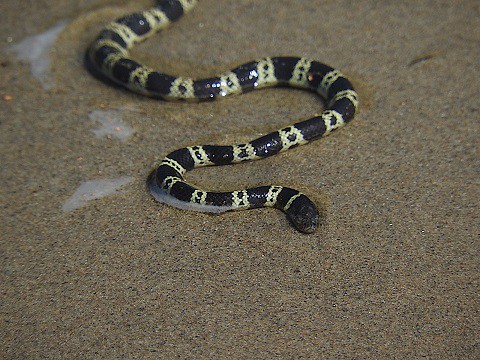
Let’s face it: being in a hazy underwater world is tense enough without a snake swimming towards you. But despite having a neurotoxic venom, the elegant sea snake coexists peacefully with humans in the shallow coastal areas it calls home. This species inhabits coastal Australia, from west to north to east, with hotspots including Cleveland Bay and Shark Bay. They measure up to 2.6 metres, and primarily prey on eels, which they suck out of holes in sandy seabeds.
If you’re not careful, the mere sight of Hydrophis elegans can induce blind panic. If you hold your nerve, it can became a fascinating piece of the exotic aquatic scenery. If you live close by, you probably got used to them years ago. Some sea snakes, like the olive and greater sea snakes, do have a tendency to wrap around scuba divers’ legs, in their obsessive search for females. It’s conceivable that Hydrophis elegans does this too.
Elegant sea snakes aren’t especially vibrant, and combined with underwater murk, they can look especially eerie. Yet the fact is that you could swim right through their capital city where the elegant sea snake senate is in session, and still not get bitten, despite swimming through hundreds of snakes (though we don’t know where this place actually is). Tiger sharks are a much bigger worry for Australian swimmers. Elegant sea snakes cause virtually no deaths, despite an LD50 toxicity rating of 0.27mg, outstripping the notorious cottonmouth at 2.04mg. The one possibility was a 23 year old man, who died while working as a deckhand on a prawn trawler in 2018, but the exact species wasn’t confirmed.
